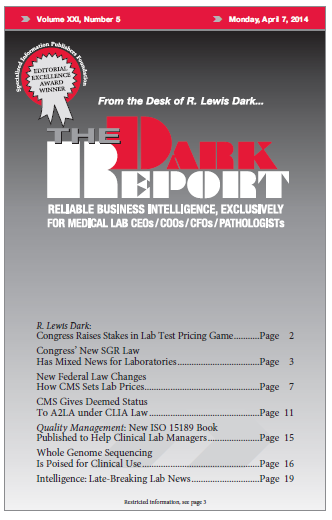CEO SUMMARY: Once again, the lab industry faces a mixed bag following passage of a new law by Congress last week. Besides the one-year fix for the SGR, H.R. 4302 also has language that may defer adjustments to Medicare Part B lab test fees until 2017 and creates a new procedure for Medicare officials to […]
To access this post, you must purchase The Dark Report.


